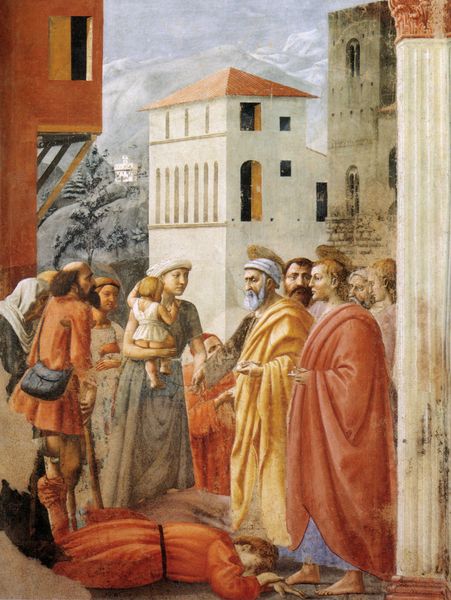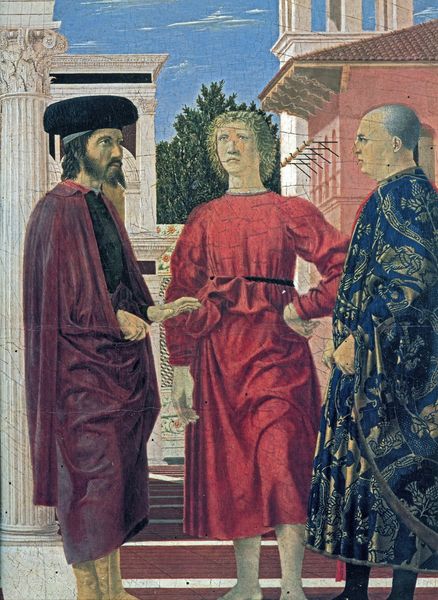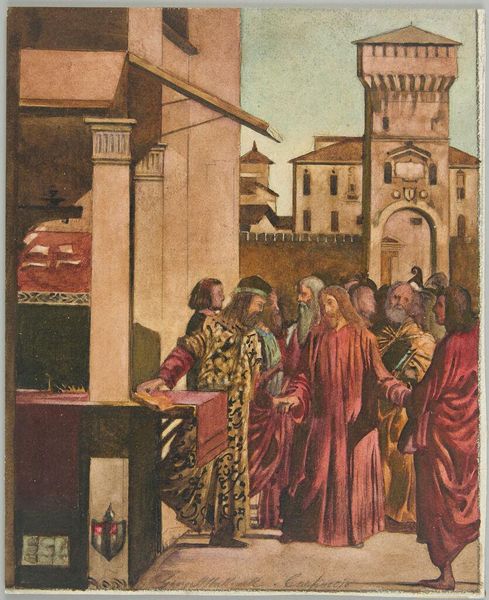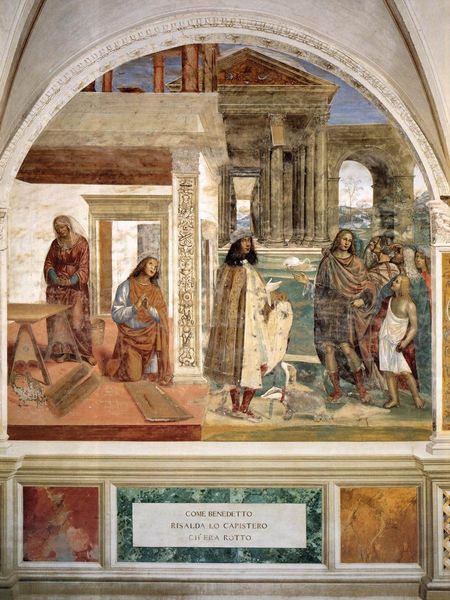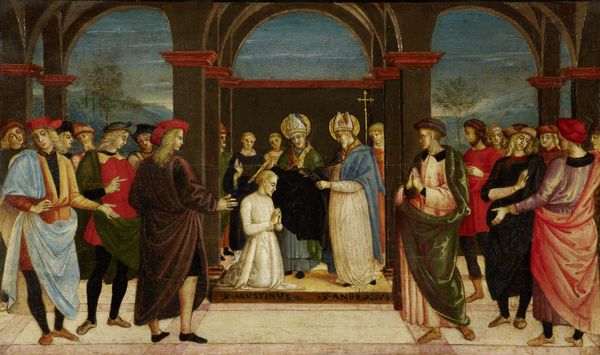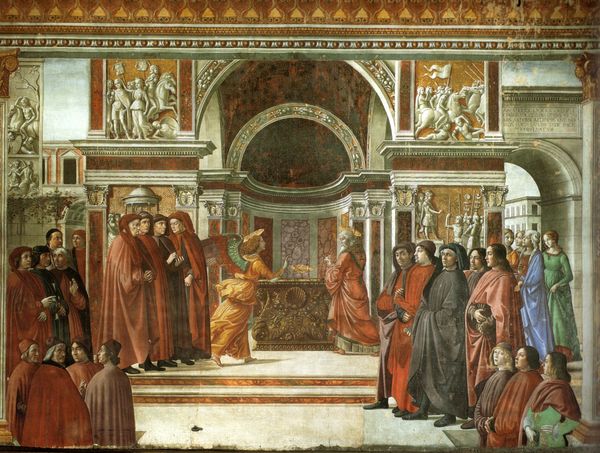
The Flagellation of Christ 1450
0:00
0:00
pierodellafrancesca
National Gallery of the Marches (Palazzo Ducale di Urbino), Urbino, Italy
tempera, painting, fresco
#
portrait
#
tempera
#
painting
#
landscape
#
perspective
#
figuration
#
fresco
#
christianity
#
history-painting
#
italian-renaissance
#
early-renaissance
Dimensions: 59 x 81.3 cm
Copyright: Public domain
Curator: This striking piece is Piero della Francesca's "The Flagellation of Christ," a tempera panel painted around 1450, now residing in Urbino. I find its spatial clarity absolutely breathtaking. Editor: Breathless is a word, alright. The quiet, almost eerie stillness is what gets me. Like a frozen tableau, detached from the violence it supposedly depicts. It's… uncanny, unsettling in its cool precision. Curator: Precisely! The foreground figures, seemingly engaged in a discussion, are completely oblivious to the brutal scene unfolding in the background. This division… It practically begs us to ask who are these figures, these well dressed ones enjoying a casual meeting? And why are they so detached? Editor: Ah, the symbolism deepens! Could those three figures in the foreground be allegorical, maybe representing theological virtues or even political figures? The flagellation becomes secondary, a stage for a larger narrative about power, justice, and perhaps, indifference? Curator: There are interpretations suggesting the figures represent an alliance for a crusade to recapture the Holy Land, and the man being flagellated symbolizes the suffering of Christendom due to the Ottoman conquests. Do you perceive similar symbol-laden qualities in the architectural structures that create a perspective system of spatial representation? Editor: Undoubtedly. The columns, the archways… they aren't just architectural elements; they are signifiers of order, of reason. Renaissance artists frequently juxtaposed this ideal geometry against human drama, I perceive them working against each other in that moment. It's like they're implying that rationality should offer a buffer, a safe distance to violence. Curator: Indeed. The perfect perspective almost emphasizes the unreal, staged quality of the event. It’s thought that della Francesca may have relied on mathematical calculations and maybe the golden ratio! Editor: It makes the painting feel… removed. It isn't about shock, disgust, or a sense of terror and awe! It is meant to have us focus not on the cruelty and violence of the central scene, but in understanding how the event relates to other realms. Curator: A puzzle, really, demanding intellectual engagement over raw emotion. It definitely embodies a very distinctive Early Renaissance sensibility. Editor: Precisely. A deeply thoughtful composition! Curator: It makes one reflect not just on the historical event, but also on our relationship to suffering. Editor: True. As always, there is so much that history omits in this painting to force other meanings into our senses! A silent story that we interpret now through symbol, composition, and our perception of the world.
Comments
No comments
Be the first to comment and join the conversation on the ultimate creative platform.

